Small county in Hunan that was site of Japanese surrender preserves momentous period in its memorial complex

Despite its small size, Zhijiang Dong autonomous county in Huaihua, Hunan province, was witness to a glorious moment in history, when it was chosen as the place to receive Japan’s surrender in the Chinese People’s War of Resistance Against Japanese Aggression (1931-45) in 1945.
Today, the memory of that historic event remains vivid, with people honoring the occasion by erecting memorial structures. As the country marks the 80th anniversary of the victory this year, renewed focus has been directed toward the Zhijiang site to upgrade its displays and facilities, in order to tell a compelling tale of the victory story and remind people how hard-won peace is.
Eight decades ago, after the Japanese government announced an unconditional surrender, its delegates were required by the Chinese to fly to Zhijiang to discuss the specifics, including the disarmament of the Japanese forces, treatment of war prisoners, and terms outlined in the agreement.
“It was no accident that Zhijiang was endowed with such a historical responsibility,” said Wu Jianhong, 59, director of the Memorial Hall of the Victory of the Chinese People in the War of Resistance Against Japanese Aggression and the Acceptance of Japan’s Surrender in Zhijiang. “It has a remarkable location, as it is the gateway from China’s Central Plains to southwestern provinces. Therefore, Zhijiang had great military importance since ancient times,” said Wu.
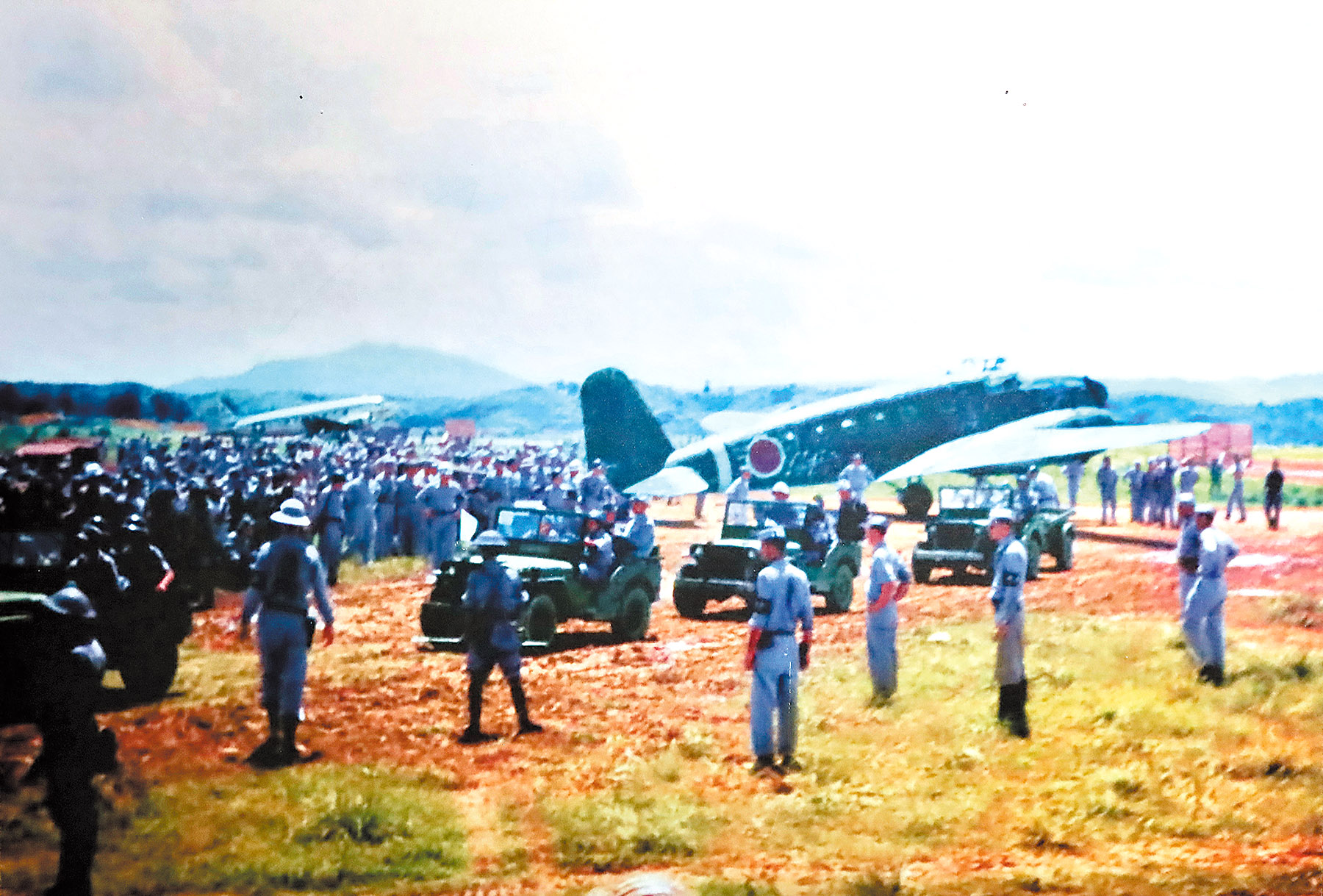

Before Japan’s surrender, Zhijiang had a strong military presence with many institutes stationed there, including more than 6,000 Flying Tigers (American volunteer pilots who fought in the Chinese Air Force between 1941 and 1942. They played a vital role in countering Japanese forces in China). It also had one of the largest military airports of the allied forces in East Asia, deterring the Japanese army and ensuring the safety of the surrender ceremony, Wu added.
In Zhijiang, they inked a memorandum on the discussed issues on Aug 21, but it was decided that the signing would be moved to Nanjing, Jiangsu province, then China’s capital, on Sept 9.
Starting from Zhijiang, surrender ceremonies were held in 16 theaters across the country and in northern Vietnam. “By the end of 1945, Japanese invaders in China were all disarmed, marking the first complete victory of Chinese people in their resistance against foreign invasions in more than a century,” said Wu.
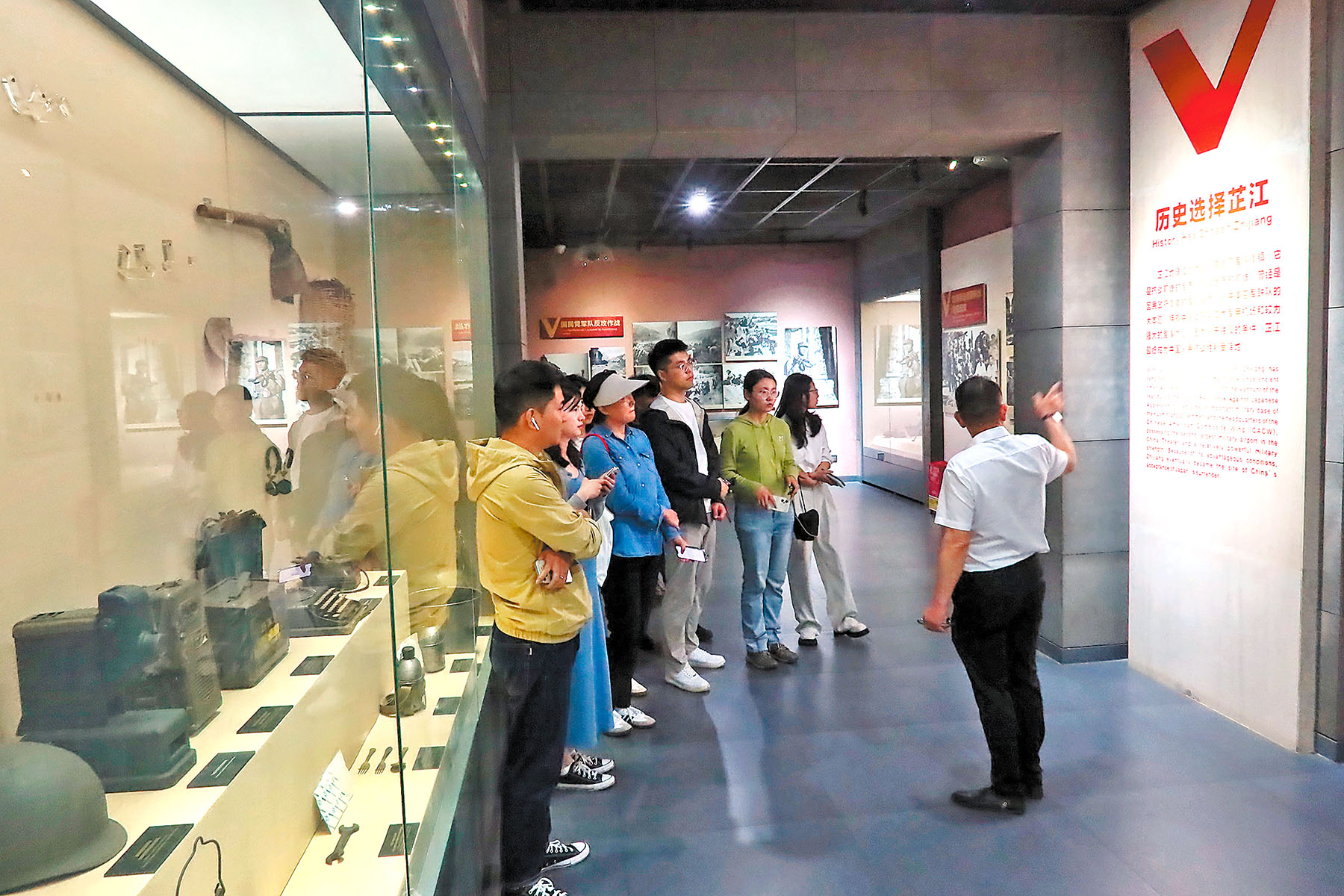
In 1947, a memorial archway was erected in Zhijiang to commemorate the occasion, but it eventually faded into obscurity with the passage of time.
Things changed during the second national census of cultural relics in 1983, when census takers accidentally discovered half of a tablet in the house of a local family, who were using it as a mat for a water vat. The tablet documented the construction of the memorial arch, swiftly reigniting memories of the illustrious past. Local people immediately recognized its value.
Two years later, during the 40th anniversary of the victory, the memorial arch and the site where delegates negotiated the detailed issues were restored. They cover 8,000 square meters.
“The memorial arch is in the shape of the character ‘blood’ in Chinese, meaning the victory was hard-won with the sacrifice of more than 35 million Chinese people. This reminds us that even in a peaceful environment, we should not forget the lesson paid for with blood,” said Wu.
Since then, every decade signified a major stride in the upgrading of memorial structures, said Zhang Zhiyong, former director of the general office overseeing the memorial halls.
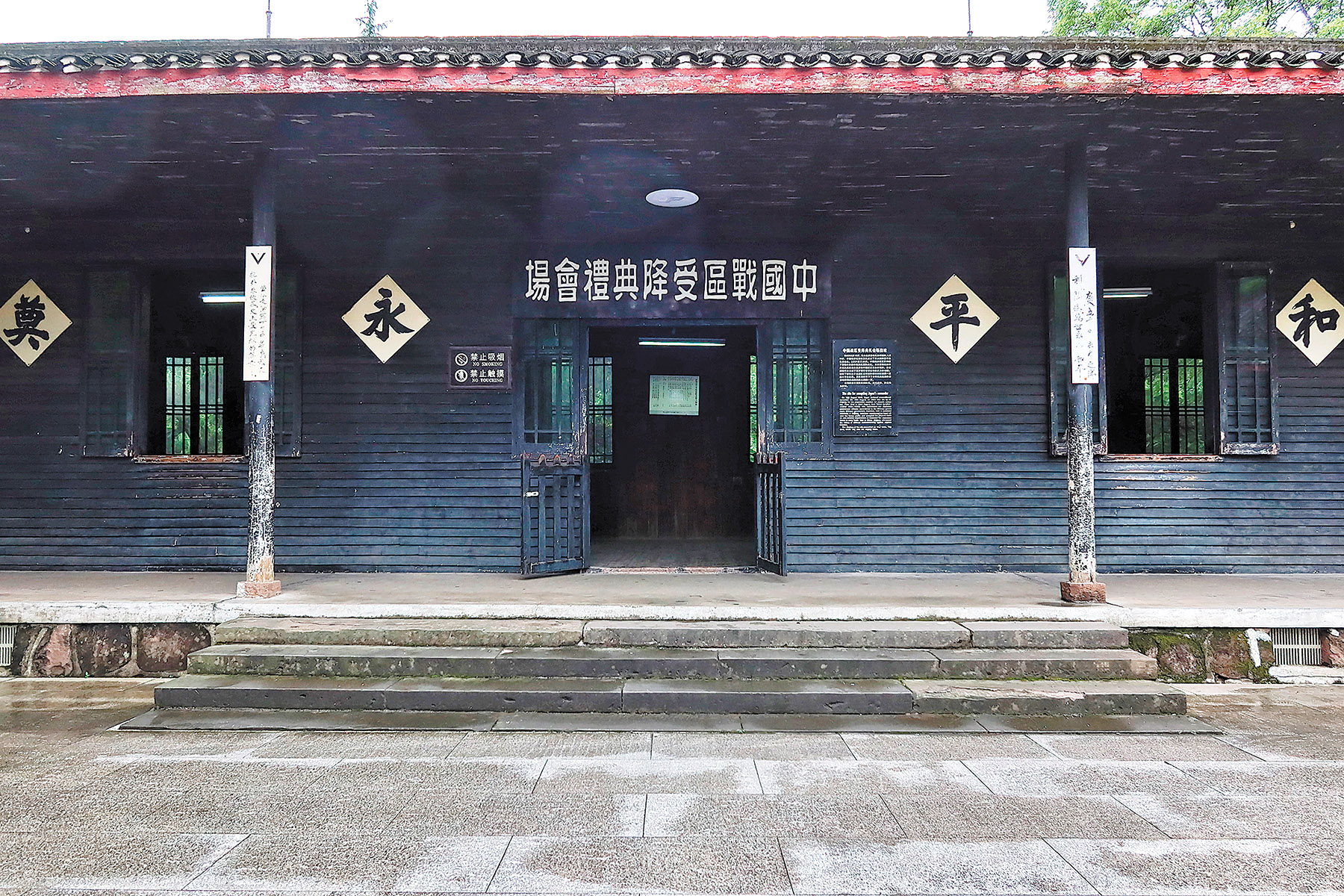
During the 50th anniversary in 1995, a memorial hall commemorating the surrender was established in Zhijiang and opened to the public.
In 2005, a memorial hall for the Flying Tigers was also established.
In 2015, with the opening of a new memorial hall commemorating Hunan’s role in the war, a memorial complex featuring a peace garden and three memorial halls covering 0.2 square kilometers was completed.
“Our complex is of worldwide significance, as it symbolizes the victory of the World Anti-Fascist War in the eastern battlefield,” said Wu.
Behind the growth of the complex is Wu, who started working there in 1987, when he was only 21. Initially a handyman, then a tour guide, finally director of the complex, he has devoted 38 years to the site.
With continuing efforts, he has collected a large number of photos, paper materials, and cultural relics related to the historical event and displayed them in the memorial halls so that visitors can better understand the history.
“A memorial hall without a rich collection of artifacts lacks a solid foundation, deep historical heritage, and consequently, vitality and persuasiveness,” said Wu.
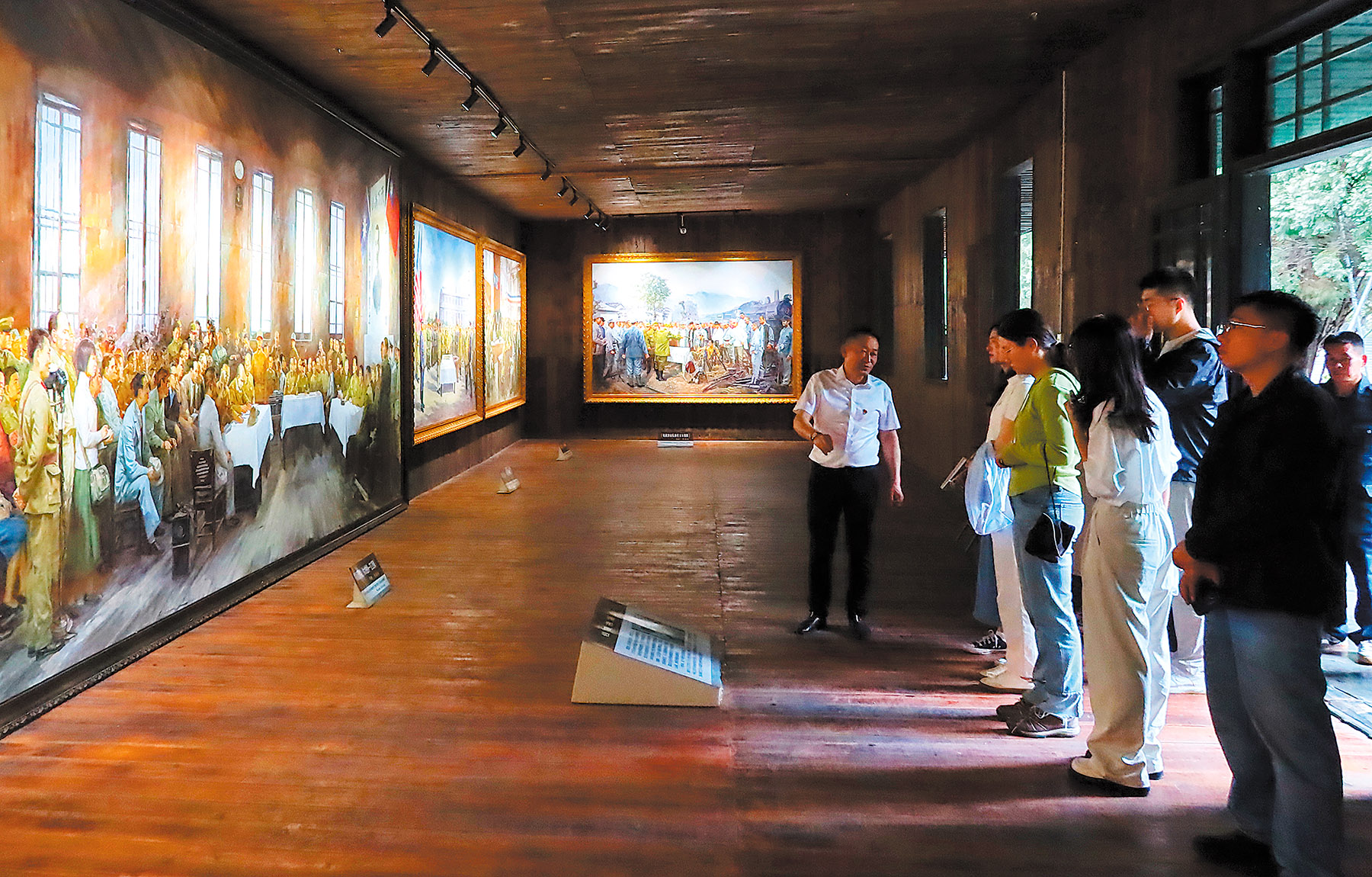
He was especially impressed by his interactions with descendants of General Xiao Yisu, who participated in the Zhijiang surrender as a delegate from the Chinese side. “In 1992 when I was a tour guide at the complex, I came to learn, from a veteran from Taiwan, the address of Xiao’s family in Taipei. Then, since 1993, I sent letters, introductions of our memorial halls, and my contact cards to the address during festivals, but didn’t receive any reply for 10 years,” said Wu.
“In 2003, I suddenly received a call from the United States, the caller introducing himself as Xiao Huilin, Xiao Yisu’s son. The letters I sent to Taiwan were finally received by his family in the US. He said his family members were moved by my persistence and decided to donate some belongings of Xiao Yisu to our hall,” he added.
Since 2004, the nine sons and daughters of Xiao Yisu traveled to Zhijiang and donated more than 400 articles, including his photos, certificates, clothes, manuscripts, and medals, among which nine were later recognized as first-grade cultural relics in China.
“They said the old belongings of the Xiao family were now the country’s property. I was deeply moved and motivated by their words,” said Wu.
He highlighted a watercolor painting Xiao Yisu received from US General Claire Lee Chennault, a pivotal figure in the Flying Tigers’ history. Chennault painted it in 1944, when the War of Resistance was approaching its end, on which he portrayed the collaborative efforts of the Chinese and US armies in combating Japanese invasion.
“Xiao Yisu cherished this painting as a precious testimony to the friendship between China and the US and kept it all along. Despite a generous offer to purchase it in the US, the Xiao family refused, choosing instead to donate it to our hall,” said Wu.
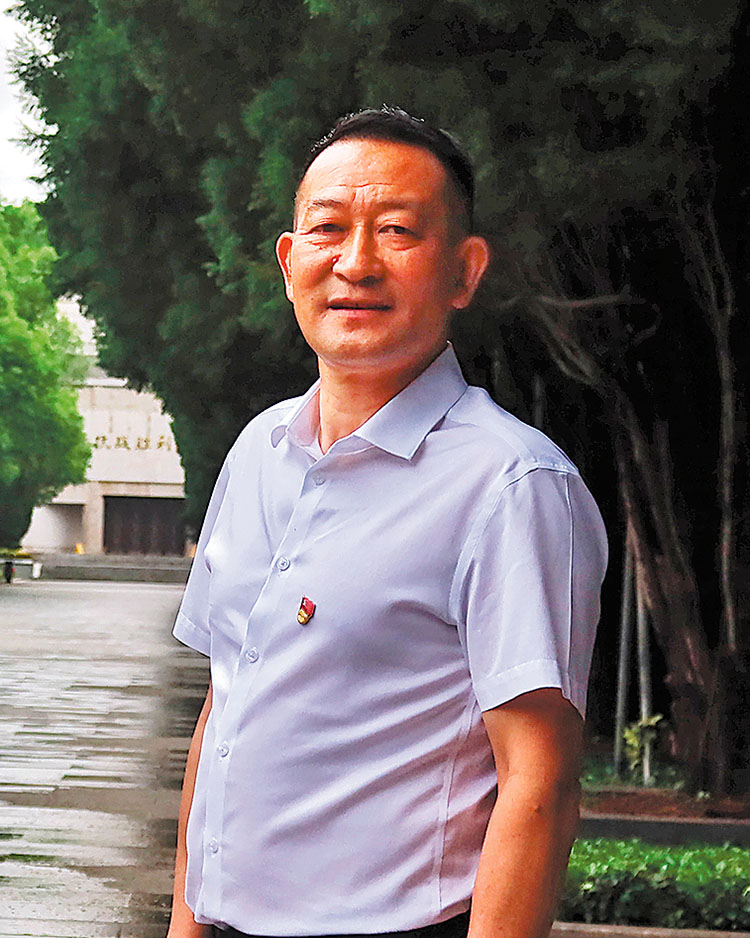
In similar ways, he has gathered precious color photos of the Zhijiang surrender and the following festive atmosphere in the county from a US veteran. After seven visits to Taiwan and two visits to the US, he successfully obtained original videos of the Zhijiang surrender.
Over the years, the complex has gained a collection of more than 10,000 cultural relics that help tell a more vivid story of the past.
The memorial complex receives more than 2 million visits on average each year, said Wu.
His team has organized study tours to the memorial complex to teach students the importance of peace, attracting students from Zhijiang and neighboring cities. “Each year, more than 100,000 students are attracted to participate in our study tours,” said Zhang.
Welcoming the 80th anniversary of the victory this year, the memorial complex is upgrading its displays, tourist service center, and parking lot to offer visitors a better experience.
“As a memorial complex dedicated to commemorating a significant historical event, we have worked to reveal history through the cultural relics. It is our solemn responsibility to pass on history and spirit encapsulated within them,” said Wu.
Contact the writer at wangru1@chinadaily.com.cn


